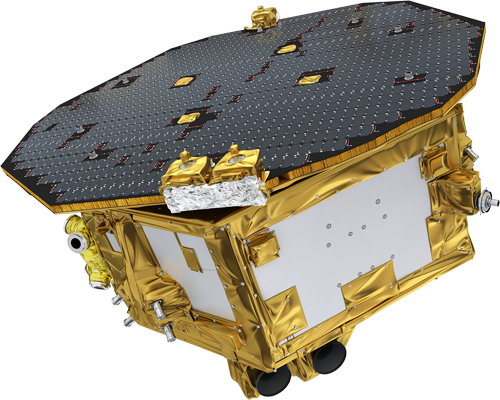The Mission - LISA Pathfinder

The Mission

LISA Pathfinder, the second of the European Space Agency's Small Missions for Advanced Research in Technology (SMART), is a technology validation mission for future spaceborne gravitational wave detectors, for example the strawman mission concept (eLISA) proposed for the 3rd large class mission opportunity in the ESA Cosmic Vision Programme.
LISA Pathfinder essentially mimics one arm of the eLISA constellation by shrinking the 1 million kilometre armlength down to a few tens of centimetres, giving up the sensitivity to gravitational waves, but keeping the measurement technology.
The scientific objective of the LISA Pathfinder mission consists then of the first in-flight test of low frequency gravitational wave detection metrology.
LISA Pathfinder is due to be launched in November 2015 on-board a dedicated small launch vehicle. The launcher selected is the new European VEGA launcher, which will launch LPF from the European spaceport of Kourou (French Guiana) into a parking orbit with perigee at 200 km, apogee at 1540 km, and an inclination to the equator of ~10o. After a series of apogee raising manoeuvres using an expendable propulsion module, LISA Pathfinder will enter a transfer orbit towards the first Sun-Earth Lagrange point (L1). After separation from the propulsion module, the LPF spacecraft will be stabilised using the micro-Newton thrusters, entering a 500,000 km by 800,000 km Lissajous orbit around L1.
Following the initial on-orbit check-out and instrument calibration, the in-flight demonstration of the eLISA technology will then take place.
